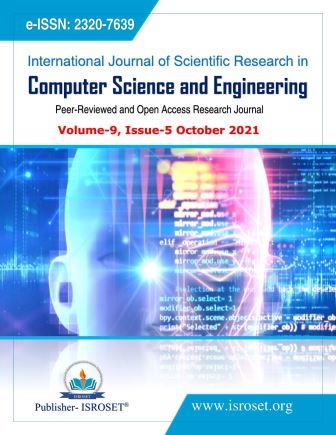Performance Analysis of Interservice Communication in Microservices
Keywords:
Microservices, Interservice Communication, API Composition, API GatewayAbstract
Microservice architecture is a popular architecture for cloud-native software applications. Microservices are loosely coupled, and each service is responsible for its data. However, when it comes to data retrieval that requires information from different data sources, microservices need to communicate with each other. There are several approaches to address this requirement. In this paper, we implemented two approaches of interservice communication and compared their performance. We have also highlighted benefits and drawbacks of each approach and introduced some alternatives.
References
N. Torvekar and P. S. Game, “Review Paper Microservices and It’s Applications?: An Overview”, Int. J. Comput. Sci. Eng., vol. 7, no. 4, pp. 803–809, 2019.
S. S. Paradkar, “eGovernment Integration Framework for Fragmented Systems”, Int. J. Comput. Sci. Eng., vol. 9, no. 1, pp. 51–55, 2021.
H. Chawla and H. Kathuria, “Building Microservices Applications on Microsoft Azure: Designing, Developing, Deploying and Monitoring”, Apress, 2019.
C. Richards, “Microservices Patterns”, Manning Publications Co., 2018.
O. Al-Debagy and P. Martinek, “A Comparative Review of Microservices and Monolithic Architectures”, in 18th IEEE International Symposium on Computational Intelligence and Informatics, pp. 149–154, 2018, doi: 10.1109/CINTI.2018.8928192.
K. Gos and W. Zabierowski, “The Comparison of Microservice and Monolithic Architecture”, in 6th International Conference on the Perspective Technologies and Methods in MEMS Design, pp. 150–153, 2020, doi: 10.1109/MEMSTECH49584.2020.9109514.
T. Ueda, T. Nakaike, and M. Ohara, “Workload characterization for microservices”, in 2016 IEEE International Symposium on Workload Characterization (IISWC), pp. 1–10, 2016, doi: 10.1109/IISWC.2016.7581269.
M. S. Hamzehloui, S. Sahibuddin, and K. Salah, “A Systematic Mapping Study on Microservices”, in Recent Trends in Data Science and Soft Computing, pp. 1079–1090, 2019.
H. Song, P. H. Nguyen, F. Chauvel, J. Glattetre, and T. Schjerpen, “Customizing multi-tenant saas by microservices: A reference architecture”, in 2019 IEEE International Conference on Web Services (ICWS), pp. 446–448, 2019, doi: 10.1109/ICWS.2019.00081.
T. Cerny, M. J. Donahoo, and J. Pechanec, “Disambiguation and Comparison of SOA, Microservices and Self-Contained Systems”, in RACS ’17: Proceedings of the International Conference on Research in Adaptive and Convergent Systems, pp. 228–235, 2017, doi: 10.2337/dc07-2424.
B. El Khalyly, A. Belangour, M. Banane, and A. Erraissi, “A comparative study of microservices-based IoT platforms”, Int. J. Adv. Comput. Sci. Appl., vol. 11, no. 8, pp. 389–398, 2020, doi: 10.14569/IJACSA.2020.0110850.
S. Newman, “Monolith to Microservices: Evolutionary Patterns to Transform Your Monolith”, O’Reilly Media, Inc., 2019.
M. Gribaudo, M. Iacono, and D. Manini, “Performance evaluation of massively distributed microservices based applications”, in 31st European Conference on Modelling and Simulation, pp. 598–604, 2017, doi: 10.7148/2017-0598.
R. Flygare and A. Holmqvist, “Performance characteristics between monolithic and microservice-based systems”, Blekinge Institute of Technology, 2017.
V. Singh and S. K. Peddoju, “Container-based Microservice Architecture for Cloud Applications”, in IEEE International Conference on Computing, Communication and Automation, pp. 847–852, 2017, doi: 10.1109/CCAA.2017.8229914.
K. Munonye and P. Martinek, “Evaluation of Data Storage Patterns in Microservices Archicture”, in IEEE 15th International Conference of System of Systems Engineering (SoSE), pp. 373–380, 2020,doi: 10.1109/SoSE50414.2020.9130516.
K. Indrasiri and P. Siriwardena, “Microservices for the Enterprise”, Apress, 2018.
Downloads
Published
How to Cite
Issue
Section
License

This work is licensed under a Creative Commons Attribution 4.0 International License.
Authors contributing to this journal agree to publish their articles under the Creative Commons Attribution 4.0 International License, allowing third parties to share their work (copy, distribute, transmit) and to adapt it, under the condition that the authors are given credit and that in the event of reuse or distribution, the terms of this license are made clear.







